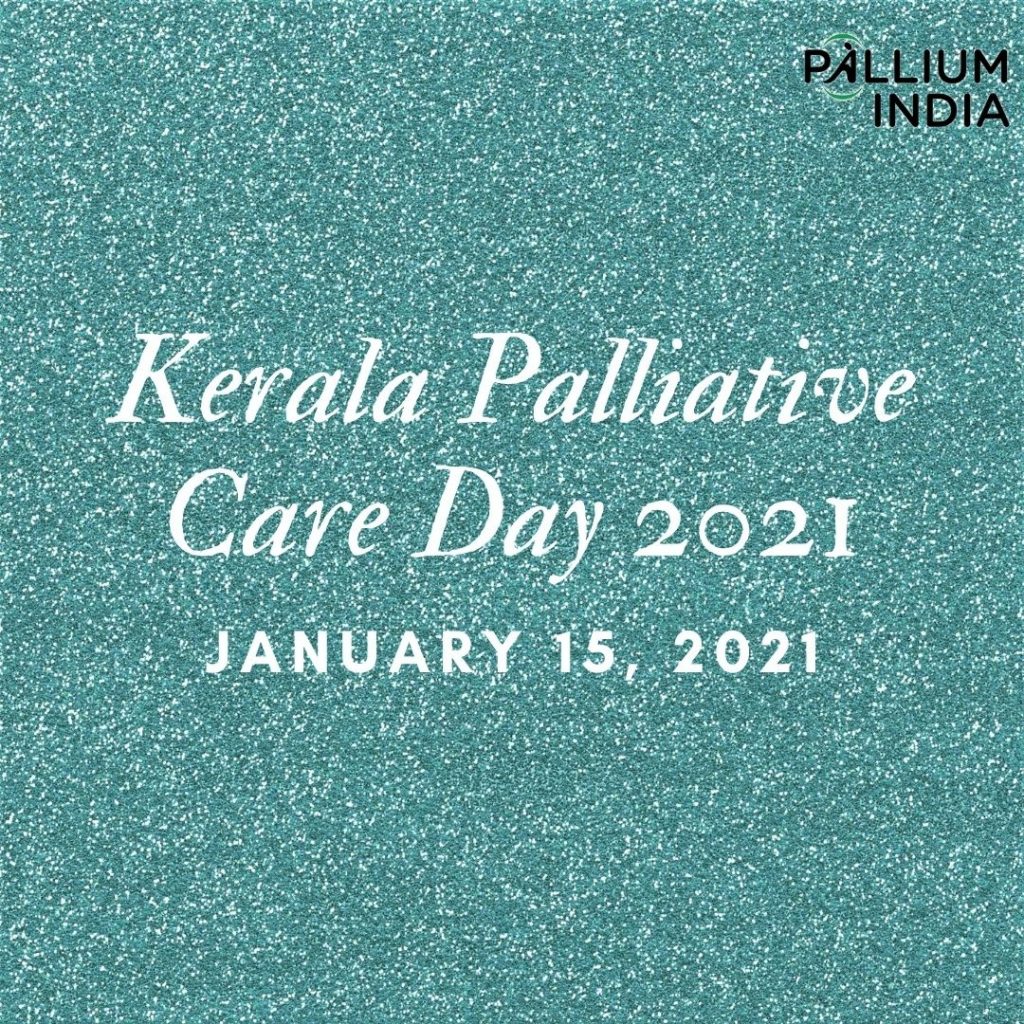Mass casualty events and palliative care: A peek into Kerala’s health-system preparedness
Vijesh V. V, Coordinator – National Outreach Programme, Pallium India, writes:

COVID-19 cases now stand at an astounding 93 million worldwide, killing more than 1.9 million people. India has been one of the most affected countries with more than 10 million cases and 1.5 lakh death. Now that the vaccine is being made available, things are more hopeful.
This past year will be etched in the annals of history for the sheer courage and resilience people exhibited in the face of an unprecedented calamity. The world aligned under the leadership of World Health Organisation to fight the biggest disaster since the Second World War. After months of lockdown, people in some parts of the world are now slowly walking back to a life of normalcy. This has been largely possible due to the tireless contribution of health workers who risked their own lives to keep the world safe.
It is important to remember that such hope can still seem like a fairy tale to the weaker sections of the society, especially those with serious health related suffering. A recently published Lancet editorial[i] reported that “a pandemic is a cause and powerful amplifier of suffering, through physical illness and death, through stresses and anxieties, and through financial and social instability”. While the economy may revive and people may forget the year long struggle and reassume their busy routine, those with serious health related suffering will continue to bear the long term impact, unless the suffering is addressed comprehensively through palliative care.
How Kerala responded to the pandemic and its resultant health related suffering
Kerala, the state that reported the first case of COVID-19 in the country, has been appreciated globally for its health system preparedness to address the pandemic. It is a state that arguably has the best public funded education and health infrastructure in the country augmented by decentralised governance penetration through local self-government machinery. It comes as no surprise that experts all over the world looked to the state for measures to contain the virus spread and stabilise the health system until an effective vaccine came into being.
Kerala is the frontrunner in India in delivering quality palliative care. It is the state that came up first with a state palliative care policy and it is also the only state that delivers public funded palliative home-care in all Panchayats. It is also well known globally for its community participation and volunteership in delivering palliative care. However, when a massive and unprecedented calamity strikes, it is important to examine whether an incumbent system is competent enough to handle the scale of disruption caused.
To redress the overwhelmed health system and manage COVID-19 on war footing, emergency services were prioritised. As a result, surgeries were postponed and out-patient services shut down. People dependent on primary healthcare facilities for their daily medication for hypertension or diabetes found it difficult to travel to nearby healthcare facility as transportation was unavailable. Even if someone managed to get to a hospital, whether public or private, accessing essential services like medicines and diagnostics remained a challenge either because of inadequate staff or lack of medicines and other consumables due to the supply-chain nightmare caused by the pandemic. Compassionate end of life care could not be prioritised. COVID-19 death meant that the family of the deceased were not even able to perform the last rites, let alone have a final conversation. The trauma of losing a loved one in such a cruel fashion will haunt families as long as they are alive. Complicated grief, mental health issues like depression and anxiety, the loss of meaning in life and loss of faith or anger towards God became increasingly prevalent in the population. People living with diseases like cancer did not get essential pain relief medication. All these manifested as compounded suffering especially among extremely vulnerable sections of the society including the elderly, people living alone and people living with disabilities or life threatening and life limiting conditions.
The state has a network of more than 900 community-based palliative care initiatives that function as a lifeline. Unfortunately, most of the initiatives had to temporarily stall delivering services for lack of human resource or finance. People who were dependent on the fortnightly or monthly Panchayat home-care visit were not being visited as frequently as they were before.
Pallium India, a palliative care NGO based out of Trivandrum that functioned 24X7 throughout the lock-down period had to scale back their daily home-care teams from 5 to 2 for a few months to comply with the state advisory. When the need for palliative care burgeoned as a result of the pandemic, palliative care services became increasing elusive for the people in need.
The road ahead
It was opined in a study published in 2009 [ii] that palliative care takes a complimentary role to curative medicine under normal circumstances. However, under dire circumstances of mass casualty events, palliative care will be required for aggressive symptom management, end of life care and the obvious humanitarian call to relieve spiritual and psychosocial suffering in addition to physical suffering.
The 73rd World Health Assembly in its resolution on COVID-19 response had sought the commitment of governments “to deliver palliative care services alongside testing and treatment for COVID-19”. World Health Organisation envisions a world where no one is left behind, to ensure universal health coverage. The centre and the state have to integrate palliative care into formal public health strategy to ensure that suffering is addressed through palliative care. Symptom management, end of life care, discussion of patient wishes, advance care planning, articulation of goals of care and support to the families of those suffering from life limiting illness should become integral to treatment plan. Patients in extreme pain should have access to affordable pain medication including essential narcotic drugs like morphine. Enough healthcare workers are to be trained in palliative care to bridge the current scarcity of trained professionals.
It is imperative to learn from the difficult lessons taught by the pandemic to assuage suffering arising from a future disaster. It may be a flood or a more virulent disease. We need to be prepared for a future that would leave a huge population in pathological grief, unable to function. The healthcare system needs to equip itself with the ability to offer grief and bereavement counselling. People with counselling skills like psychologists and medical social workers need to be welcomed into the healthcare system.
The state disaster management authority, the first body to respond to disasters should include palliative care principles in their disaster preparation, mitigation and response plan. Multi-sectorial participation should be ensured to train frontline workers and volunteers in basics of palliative care.
The Astana declaration 2018 on primary healthcare stresses on empowering and engaging individuals, families, communities and civil societies for enhancing health and wellbeing. Healthcare is complete when the health workforce delivers services in partnership with the community. Kerala’s community-based palliative care volunteer organisations should come together and partner with local self-government’s community initiatives and step in as care givers for the old, weak and the marginalised.
Kerala can be a role model
Kerala has the most robust palliative care system in the country. Majority of community-based palliative care initiatives are based out of Kerala. The state has announced its commitment to make tertiary care centres palliative care friendly through the 2019 revision to state palliative care policy. A study[iii] reports that morphine consumption which is considered to be the most credible indicator on access to palliative care is 1.32[iv] mg/capita in Kerala while the national average remains 0.11 mg/capita[v]. If palliative care can reach where it is now in Kerala, the state has the potential to integrate palliative care into the health system response to a disaster in a manner worthy of emulation by states within India and other developing nations.
[i] Palliative care and COVID 19 pandemic The Lancet DOI: https://doi.org/10.1016/S0140-6736(20)30822-9
[ii] Matzo, M., Wilkinson, A., Lynn, J., Gatto, M., & Phillips, S. (2009). Palliative Care Considerations in Mass Casualty Events with Scarce Resources. Biosecurity and Bioterrorism: Biodefense Strategy, Practice, and Science, 7(2), 199–210. doi:10.1089/bsp.2009.0017
[iii] DOI:10.1200/ JGO.2016.007872 Journal of Global Oncology 3,no.6(December 01,2017)720-727
[iv] University of Wisconsin Pain and Policy Studies Group: Global Opioid Consumption Data: Countries. 2013. http://www.painpolicy.wisc.edu/countryprofiles
[v] University of Wisconsin Pain and Policy Studies Group: Global Opioid Consumption Data: Countries. 2013. http://www.painpolicy.wisc.edu/countryprofiles




